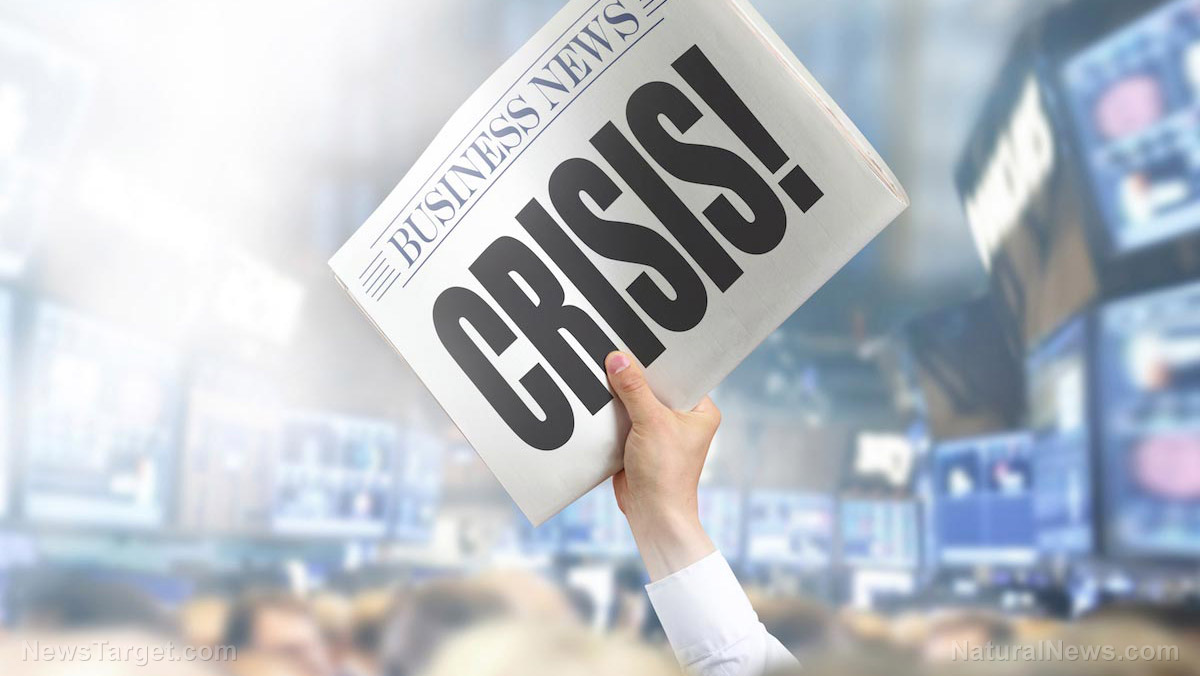Senior Federal Reserve official says “transitory” inflation is not actually transitory
10/15/2021 / By Mary Villareal

The consumer price index (CPI) suggests that the “transitory” inflation floated by the government is not actually transitory.
According to a senior official at Federal Reserve, the biggest burst in U.S. inflation in three decades is likely to last longer than expected and it should no longer be considered transitory. Atlanta Federal Reserve President Raphael Bostic says that the sharp increase in prices in 2021 tied to the pandemic has now broadened beyond just a handful of major goods and will not wane anytime soon.
These comments by Bostic are in contrast to the statement by the U.S. central bank leadership. Federal Reserve Chairman Jerome Powell has insisted for months that the inflation is just “transitory” and merely reflecting a surge in pent-up demand after the reopening of the economy.
Bostic says he and his staff will no longer refer to the current inflation as transitory because it could persist probably well into 2022 and beyond. He also points to worsening bottlenecks in supply chains, which is how businesses procure parts and supplies. Major shortages of many key materials have pushed prices higher, delayed production and forced businesses to charge more for their products.
The real danger, however, remains in the fact that consumers and businesses could come to expect higher prices in the long run if the inflation does not begin to subside soon. If not, it could result in a level of inflation that runs above the Fed’s 2 percent annual target. (Related: Supply shortages drive inflation to record levels.)
U.S. prices have gone up 5.3 percent in the past year based on the CPI, or 4.3 percent if using the central bank’s preferred inflation gauge. Bostic thinks the price pressures will eventually ease, but it has to be watched carefully to make sure that inflation does not get out of hand.
The Fed should also begin to taper or scale back its monthly purchases of $120 billion in bonds. The record amount of bond-buying, however, has helped drive U.S. interest rates to record lows during the pandemic and keep the economy from suffering worse damage.
Inflation not going away soon
How long “transitory” means can be a head-scratcher. Electricity prices are now hitting all-time highs in European countries, with the overall consumer-price growth at a 3 percent high in the Eurozone in August. The volatile energy sector has seen European natural-gas inventories being depleted while there is an ongoing lack of wind power, increasing their reliance on gas-powered electricity.
These sky-high gas prices in Europe have made their way to affect the U.S., as well.
The issue, according to Barclays analyst Michael Pond, is that the market has a different meaning of “transitory” compared to the Fed and professional forecasters.
The prices of swap contracts that insure investors against inflation and inflation-linked bonds suggest that the CPI year-over-year growth will remain or go above 2.6 percent through 2025. Market-based inflation expectations in the U.K. and the rest of the eurozone have also jumped – not only for short maturities but all the way up to five-year contracts.
This is in contrast with Wall Street projections that show inflation returning to normal in a few months.
Gas shortages, bottlenecks, food shortages and political problems affecting raw materials and freight costs are expected to remain well above pre-COVID levels, which were initially expected to go away by the end of 2022.
Economists haven’t devised a way to predict when the moves in some prices can cause moves in all prices. Thus, investors still need to hedge against worst-case scenarios, considering that they have already been paying a premium for inflation protection all year.
Get more updates about inflation and other economic insights at Bubble.news.
Sources include:
Tagged Under: big government, Collapse, debt collapse, economy, Federal Reserve, finance, industry-specific inflation, Inflation, market crash, money supply, national security, price hikes, shortage, supply, transitory inflation
RECENT NEWS & ARTICLES
COPYRIGHT © 2017 MARKET CRASH NEWS




















